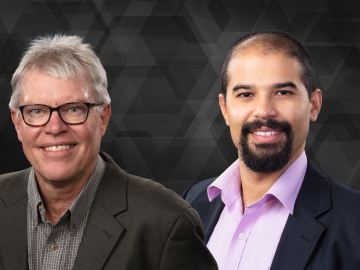
Filter News
Area of Research
- Advanced Manufacturing (2)
- Biology and Environment (3)
- Energy Science (13)
- Fuel Cycle Science and Technology (1)
- Fusion and Fission (28)
- Fusion Energy (10)
- Isotope Development and Production (1)
- Isotopes (4)
- Materials (21)
- Materials for Computing (2)
- National Security (15)
- Neutron Science (6)
- Nuclear Science and Technology (36)
- Nuclear Systems Modeling, Simulation and Validation (1)
- Sensors and Controls (1)
- Supercomputing (29)
News Topics
- (-) Nuclear Energy (122)
- (-) Quantum Computing (53)
- (-) Security (31)
- 3-D Printing/Advanced Manufacturing (147)
- Advanced Reactors (40)
- Artificial Intelligence (131)
- Big Data (79)
- Bioenergy (112)
- Biology (128)
- Biomedical (73)
- Biotechnology (39)
- Buildings (74)
- Chemical Sciences (86)
- Clean Water (33)
- Composites (35)
- Computer Science (226)
- Coronavirus (48)
- Critical Materials (29)
- Cybersecurity (35)
- Education (5)
- Element Discovery (1)
- Emergency (4)
- Energy Storage (114)
- Environment (218)
- Exascale Computing (67)
- Fossil Energy (8)
- Frontier (64)
- Fusion (67)
- Grid (74)
- High-Performance Computing (130)
- Hydropower (12)
- Irradiation (3)
- Isotopes (62)
- ITER (9)
- Machine Learning (68)
- Materials (157)
- Materials Science (158)
- Mathematics (12)
- Mercury (12)
- Microelectronics (4)
- Microscopy (56)
- Molten Salt (10)
- Nanotechnology (64)
- National Security (86)
- Neutron Science (171)
- Partnerships (68)
- Physics (69)
- Polymers (35)
- Quantum Science (93)
- Simulation (65)
- Software (1)
- Space Exploration (26)
- Statistics (4)
- Summit (71)
- Transportation (103)
Media Contacts

The National Center for Computational Sciences, located at the Department of Energy’s Oak Ridge National Laboratory, made a strong showing at computing conferences this fall. Staff from across the center participated in numerous workshops and invited speaking engagements.

ORNL’s National Security Sciences Directorate partnered with the University of Tennessee’s Howard H. Baker Jr. School of Public Policy and Public Affairs to develop a graduate certificate in nuclear security that launched in the fall of 2024.

Since their establishment in 2020, the five DOE National Quantum Information Science Research Centers have been expanding the frontier of what’s possible in quantum computing, communication, sensing and materials in ways that will advance basic science for energy, security, communication and logistics.

In early November, ORNL hosted the International Atomic Energy Agency (IAEA) Interregional Workshop on Safety, Security and Safeguards by Design in Small Modular Reactors, which welcomed 76 attendees representing 15 countries, three U.S. national labs, domestic and international industry partners, as well as IAEA officers.

From during his early years at NASA to his current role a researcher and group leader, Peter Fuhr has pushed the boundaries of optical and sensor technology. Fuhr’s path is marked by wacky creativity that can’t confine itself to challenges in a single field. No idea is too far out to try out — and so many of them work that Fuhr has a host of inventions and start-ups under his belt.

ORNL welcomed attendees to the inaugural Southeastern Quantum Conference, held Oct. 28 – 30 in downtown Knoxville, to discuss innovative ways to use quantum science and technologies to enable scientific discovery.

The Department of Energy’s Quantum Computing User Program, or QCUP, is releasing a Request for Information to gather input from all relevant parties on the current and upcoming availability of quantum computing resources, conventions for measuring, tracking, and forecasting quantum computing performance, and methods for engaging with the diversity of stakeholders in the quantum computing community. Responses received to the RFI will inform QCUP on both immediate and near-term availability of hardware, software tools and user engagement opportunities in the field of quantum computing.

Teletrix, a company specializing in radiation training tools, has transitioned from a research and development license to a commercial license for its augmented reality, or AR, platform that simulates ionizing radiation. This advanced platform was developed using technologies licensed from ORNL.

Two papers led by researchers from ORNL received “Editor’s Choice” awards from the journal Future Generation Computer Systems. Both papers explored the possibilities of integrating quantum computing with high performance computing.

A new technology to continuously place individual atoms exactly where they are needed could lead to new materials for devices that address critical needs for the field of quantum computing and communication that cannot be produced by conventional means.


